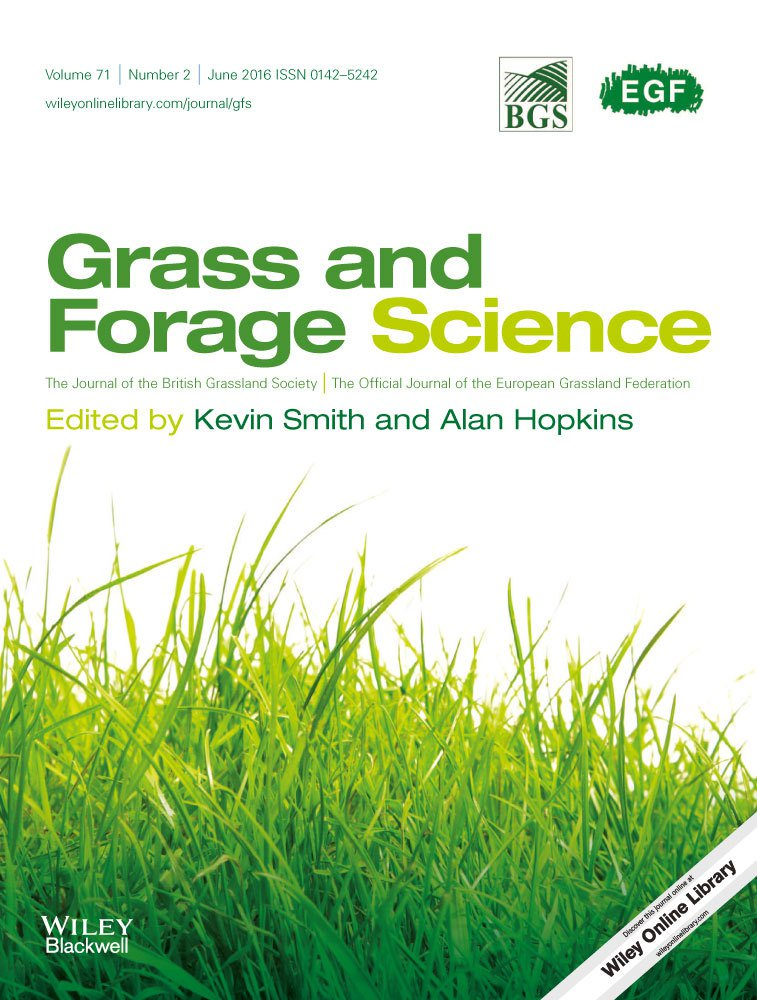Ver ítem
- xmlui.general.dspace_homeCentros e Institutos de InvestigaciónCIA. Centro de Investigaciones de AgroindustriaInstituto de Tecnología de AlimentosArtículos científicosxmlui.ArtifactBrowser.ItemViewer.trail
- Inicio
- Centros e Institutos de Investigación
- CIA. Centro de Investigaciones de Agroindustria
- Instituto de Tecnología de Alimentos
- Artículos científicos
- Ver ítem
Influence of cultivar and cutting date on the fatty acid composition of forage crops for grazing beef production in Argentina
Resumen
The fatty acid composition and total lipids of various
forage crops at different cutting dates and seasons,
which are used in forage grazing beef production in
Argentina, were determined. Three experiments were
carried out at the Agricultural Experimental Station
of INTA, Anguil, La Pampa, Argentina Samples of
alfalfa from three different cultivars with different
dormancy groups (G4-5, G6-7 and G8-9) and samples
of ryegrasses Bill, Florida and
[ver mas...]
The fatty acid composition and total lipids of various
forage crops at different cutting dates and seasons,
which are used in forage grazing beef production in
Argentina, were determined. Three experiments were
carried out at the Agricultural Experimental Station
of INTA, Anguil, La Pampa, Argentina Samples of
alfalfa from three different cultivars with different
dormancy groups (G4-5, G6-7 and G8-9) and samples
of ryegrasses Bill, Florida and Queue, wheats
Charrua and Guapo, and triticale Don Santiago cultivars
were taken at different cutting dates and analysed
for total lipids and fatty acid composition.
Significant differences on the fatty acid composition,
the ratios 18:3n-3/18:2n-6 and polyunsaturated fatty
acids (PUFA) due to cultivar, cutting date and season
were found. Taking into account the importance
of 18:2n-6 and 18:3n-3 fatty acids as substrates for
the conjugated isomers of 18:2n-6 (CLA) and n-3
PUFA concentrations in beef, the fatty acid composition
of forages needs to be considered in forage
grazing beef production systems. Data variation in
both total lipids and individual fatty acid proportions
in forages should be taken into account to establish
the potential to cultivate crops for a higher content
of n-3 PUFA and hence the opportunity to deliver
more n-3 PUFA and CLA into beef.
[Cerrar]

Autor
Garcia, Pilar Teresa;
Pordomingo, Anibal;
Perez, Carolina Daiana;
Ríos, M.D.;
Sancho, Ana Maria;
Volpi Lagreca, Gabriela;
Casal, Jorge José;
Fuente
Grass and forage science 74 (1) : 235–244. (March 2019)
Fecha
2016-06
Editorial
Wiley
ISSN
1365-2494
Formato
pdf
Tipo de documento
artículo
Palabras Claves
Derechos de acceso
Restringido
 Excepto donde se diga explicitamente, este item se publica bajo la siguiente descripción: Creative Commons Attribution-NonCommercial-ShareAlike 2.5 Unported (CC BY-NC-SA 2.5)
Excepto donde se diga explicitamente, este item se publica bajo la siguiente descripción: Creative Commons Attribution-NonCommercial-ShareAlike 2.5 Unported (CC BY-NC-SA 2.5)

